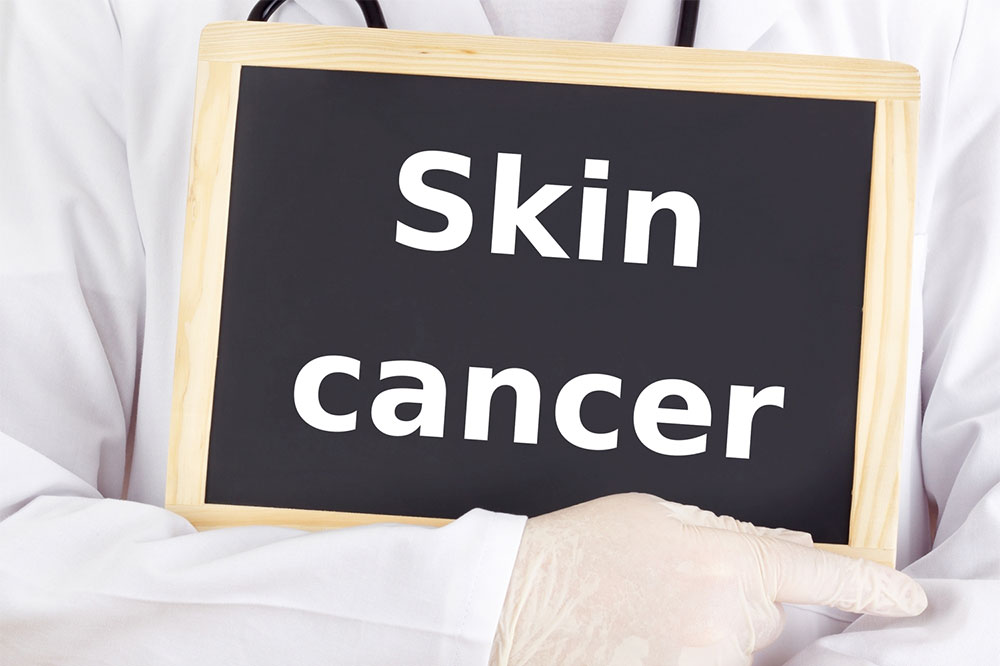
Skin cancer – Symptoms, causes, and treatments
Skin cancer can affect anyone. It mainly occurs due to overexposure to the sun’s ultraviolet rays, but genetics could also be involved. There are three major types of skin cancer – basal squamous cell carcinoma, cell carcinoma, and melanoma. However, abnormal growth of skin cells is a common indication in most of these types. This article briefly discusses the different factors about skin cancer, such as its symptoms, causes, and treatments.
Symptoms of skin cancer
Skin cancer mainly develops in areas exposed to the sun, such as the neck, chest, scalp, arms, hands, legs, and ears. In rare cases, it could affect the palms, fingernails, genitals, and toenails. One of the first signs of the disease is the development of skin lesions or an unusual growth or bump. One may also notice a dark spot or new mole that does not go away. The characteristics of this spot or mole are as follows:
Color: The spot has an unusual color like red, black, pink, or blue.
Diameter: This unusual spot is larger than usual. It could be the size of a pea.
Changing size: The size, shape, or color of the spot or mole keeps changing.
Asymmetrical : The two halves of the mole are not the same or identical.
Border: The border of the spot is either jagged or irregular.
Individuals who notice a mole or spot of this kind should visit a doctor immediately to rule out cancer. The doctor will examine the size, shape, color, and texture of the suspicious area. He would also check for dry patches, bleeding, and scratches. After that, a biopsy may be conducted if the doctor suspects that the spot is cancerous.
Causes of skin cancer
The disease could arise due to several reasons, but the most common causes include:
DNA mutations: This is the leading cause of skin cancer. The skin cells’ DNA can mutate, giving rise to abnormal cells. These abnormal cells grow out of control and form a mass.
Exposure to UV rays: Exposure to the sun’s harmful and extreme UV rays can also cause skin cancer by affecting the DNA of the skin cells.
Exposure to chemicals: Some kinds of skin cancers are caused due to long-term exposure to cancer-causing chemicals like arsenic, industrial tar, coal, etc.
Individuals exposed to these risk factors must take necessary precautions and get checked immediately on noticing any signs of the disease.
Treatments for skin cancer
A treatment plan will depend on various factors, such as the disease’s location, type, size, and stage. Standard treatment options include:
Excisional surgery: The infected area and a portion of the healthy skin surrounding it are cut out.
Chemotherapy: Medications are either injected into the bloodstream or administered orally to destroy the cancer cells.
Immunotherapy: Doctors prescribe medications or topical creams to stimulate the immune system and destroy the cancer cells.
Radiation therapy: High-powered energy beams are used to kill cancer cells. Photodynamic therapy is a similar procedure where laser light is used to destroy the cells.
Mohs surgery: A procedure where the growth is removed from the skin layer by layer. Every layer is examined under a microscope until no abnormal cells are visible.
Cryotherapy: The growth of harmful cells is stopped by freezing them with liquid nitrogen.
Curettage and electrodesiccation : A long blade is used to scrape away the cancer cells. Cancer cells that cannot be removed by scraping are burned using an electric needle.
When it comes to skin cancer, unusual spots on the body should not be ignored. Taking preventive measures, such as protecting the skin from the sun’s harmful rays, is advised. On being diagnosed with the disease, the doctor may prescribe multiple tests to determine the stage. Depending on the stage and type, a treatment plan will be formed.




